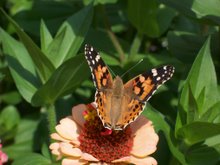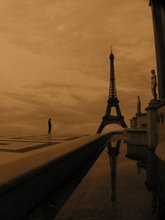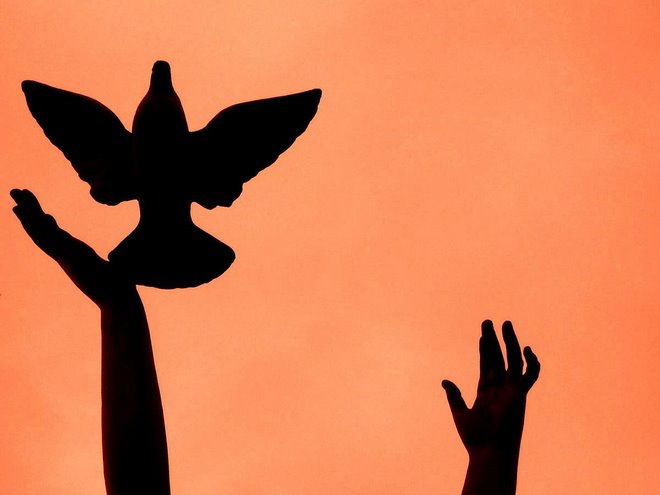Exactly one month ago, On November 10th, 2007, a demonstration of a Neo-Nazi political group took place in the center of Prague. While the reported intention was to protest the war in Iraq, the date is telling: it is the anniversary of Kristallnacht (Crystal Night), when in 1938 Jewish homes and shops were ransacked across Germany and Austria by Nazis, who killed more than 100 Jews. The Neo-Nazis last month were met by thousands of protestors who blocked the planned march through Old Town Square and shouted down their speakers. One leader of the Neo-Nazis shouted at the crowd of protestors that “there never was a Holocaust, but there will be one!”
The reaction to this demonstration shows that people have not forgotten the lessons of history, but the fact that the event took place at all shows that we will never completely escape the risk of history repeating itself. This is an especially potent truth for one of the protestors who blocked the Neo-Nazis on Old Town Square, 87 year old Jan Weiner. Jan was a young Jewish man when the Nazis first occupied Czechoslovakia, and he lived to experienced first-hand many of the trials and sorrows of the Czech people throughout the 20th century. He now teaches 20th century European history to foreign students in Prague, which is where I met him and have had the privilege of studying under him for the past four months.
Jan was born and spent his childhood in German, where his father worked. In face of the rise of Nazi anti-Semitic sentiment in the early 30s the family moved back to their native land, hoping that there they would be safe from the growing storm. Jan quickly connected with the Czech people, attended a Czech school, became very involved with the Sokol movement (as did most of the young people at this time), and “learned to love the country and the people who had given us – and many other refugees – asylum and a new home” (Weiner 1). Jan’s mother worked closely with immigrants such as Remarque, who fled Germany to Prague, where they were granted asylum and Czechoslovak citizenship. It might be this very work which proved disastrous for Mrs. Weiner a few years later.
With the annexation of Austria in 1938, and observing the covetous rhetoric of Hitler directed at the Sudetenland boarder regions of Czechoslovakia, the Czech people began bracing themselves for a struggle. The Sokol movement, a national fitness society designed to encourage physical and mental strength as well as nationalistic and community sentiment, was a significant conductor of determination to resist German encroachment. As tensions rose, Czechoslovakia mobilized in 1938. Jan, and most of his young friends, volunteered for the army and were sent to the Krkonoše mountains bordering Germany, where they expected to engage the Germans at any moment. But the Czech fire for resistance was extinguished on September 29th, 1938, when France and England acknowledged German’s right to occupy Sudetenland. When the support of their former western allies suddenly evaporated, there was no hope in armed resistance, so Jan and the rest of the young soldiers were called back to Prague and the Germans took ownership of a massive swath of Czechoslovak land.
As the optimism swiftly deteriorated the atmosphere turned gloomy. In less than 6 months the Nazis violated the Munich Agreement and militarily occupied Prague and the rest of Czechoslovakia. Although crowds of Czechs came out to watch the German tanks rolling by “no one shouted. Through the steadily-falling snowflakes one could only hear the engines...” (4). And before armed combat was sparked anywhere, the war began in Czechoslovakia. All legal rights of Jews were abolished, and in light of the Kristallnacht their future looked grim. Thanks to the help of his mother’s connections, Jan was able to acquire a fake passport and escape to join his father in Yugoslavia. His mother remained.
In the film “The Fighter,” a documentary of Jan’s life, the camera follow Jan as he returns to a house in Yugoslavia, 60 years after he and his father lived there. While they waited to see what would happen, the disaster struck. Poland fell to the Nazis, then France, and in April 1941 the Nazis quickly surrounded Yugoslavia and occupied it. Jan and his father were trapped. That night in despair his father told him that he intended to kill himself. “The Fighter” shows a scene in which Jan stands over the bed where decades ago he watched his father breathe his last, remembering the panic rising in his chest. Afterwards 20 year old Jan snuck out the window, and made it to Lublyana, where he found a place to hide out for a week. He then caught a train and traveled underneath the cabin for dozens of hours across the northern length of Italy. In Genoa he was caught and threatened with being sent back to Prague. “If you do that,” he shouted, “it would be kinder and cheaper to shoot me right here! I will certainly be shot in Prague!” (55). In the end the Italians put him in one of their own prisoner camps in Southern Italy, which made him feel “delighted.” He would spend 2 years in an Italian prison.
During these two years back in Prague conditions grew steadily worse, and Jan was definitely right to feel delighted at being imprisoned in Italy. Jews were deported daily from Prague, mainly to the concentration camp in the north, Theresienstadt, before they were sent to Auschwitz or Mauthausen for extermination. All Jews expected their deportation papers at any moment, and the slightest miss-step could instantly cause fatal attention to fall upon them. Social interaction largely ceased, and most Czechs, especially Jews, were pushed into a survival-mode of life, unable to be concerned about anything else except getting through another day alive.
There was, however, a small but very professional resistance movement, built most significantly around the double-agent “A-54,” and reporting directly to president-in-exile Beneš in London. A-54 was Paul Thummel, a high ranking German undercover spy in Prague, who for some reason decided to turn double-agent and report his knowledge of highly classified information to the Czech resistance. He reported detailed information predicting the invasion of France, the German betrayal of Russia, and the invasion of Britain. When Beneš (and Churchill) realized what a powerful advantage they had in A-54, there was much more motivation to support and build up the Czech resistance from London. Czech soldiers were specially trained in espionage, explosives, and assassination, and were parachuted at great risk into Czechoslovakia to bolster the Prague underground movement.
At the same time the Nazi leadership began to realize that they had a serious leak of information in Prague, and none other that Reinhard Heydrich decided to take care of the situation himself. He arrived in Prague in September 1941, and lost very little time breaking down the resistance. In his first week “163 people were sentenced to death and 718 to concentration camps,” and after two weeks he wrote Hitler that “approximately 5,000 people have been arrested...” (44). This reign of terror was brought to the attention of Beneš, who for a long time had considered the benefits of arranging for the assassination of a high-ranking Nazi by the Czech underground. Now he knew who the target should be.
Two specially trained soldiers of the Czech army in London, Gabchik and Kubish, were parachuted in and made contact with the Czech resistance leaders. After many delays and complications, and after A-54 had already been captured and sent to Theresienstadt, in May 1942 they were ready. They knew the exact place and hour when Heydrich’s car would come around a hair-pin turn, and so they lay in wait. But as the car came around the corner and Gabchik aimed his gun, the trigger jammed. Kubish leaped into action and threw a tank grenade into the car, which exploded but only wounded Heydrich, who drew his pistol along with his driver and began firing on the would-be assassins. Kubish and Gabchik had to flee.
While the attack was a disaster from the perspective of the paratroopers, in the end it was successful. Several days later Heydrich suddenly died in the hospital, possibly from blood-poisoning. But whether the entire plan was a “success” is another question. The reprisal was terrible.
In the former location of the village Lidice there today stands a statue depicting the 98 children who lived there in 1942. They look frightened and bewildered, as they must have looked on the night of June 9th. Acting on specific instructions from Hitler himself, German troops surrounded this tiny village and raided it without warning. Every person was dragged out into the night, the buildings set on fire, and 173 men shot. The women and children were almost all sent to Theresienstadt. The village was erased from all maps. The point was impossible to misunderstand: Hitler had the power to cause whole villages to cease to exist, and for every assassinated leader he would kill thousands.
In Prague martial law was enforced, and Hitler himself ordered that 10,000 Czech suspects should be arrested and all political prisoners be shot (98). The “shock and awe” effect of the persecution was more brutal and effective than anything Heydrich had ever initiated. The Czech resistance was completely decimated, and thousands of civilians were shot outright or sent to concentration camps.
For a while the two assassins and five other paratroopers were able to hide in the crypt of the Karel Boromaeus Greek Orthodox Church. This church stands on Pštrossova street, a few houses away from where I now live. The paratroopers kept constant guard, slept in the tombs, and tried not to despair over the torture that they felt they had unleashed on the Czech people. They were protected by four priests, and for a while they were safe. Then another British-trained paratrooper, Karel Curda, who had been hiding in the countryside, suddenly turned himself over to the Gestapo and agreed to give them all the information he had on the assassins. Maybe he truly believed the Nazi promise that the civilian executions would stop if the assassins were found, or maybe he was motivated by the one million German mark reward. Whatever the case, his cooperation led directly to the discovery of the secret crypt. A fierce battle of several hours took place between the 7 paratroopers and hundreds of German soldiers. One the side of the stone church the damage from machine-gun fire has been left as a tribute to that struggle. Each of the paratroopers fought fiercely until one by one they had only one bullet, which they used to kill themselves. These final seven shots signaled the total death of the Prague resistance movement. On the church today there is a plaque which reads “in memory of the members of the CS abroad army, who here lay down their lives for our freedom...”
In the fallout of Heydrich’s assassination, one of the casualties was Jan’s mother. While he has no specific information about her death, she was most likely transported to Theresienstadt. There Jan leads several class trips every year, pointing out the women’s quarters (where he refuses to go after the first visit with his daughter), the hundreds of graves of unknown victims (one of which may be his mother’s), and the train tracks that lead to Auschwitz (where she might have been sent). Seeing the camp through his eyes, there are weary and silent ghosts around every corner. At the end of every tour he has the ritual of sitting by the gate and ordering a shot of vodka. He salutes in the direction of the women’s quarters, and drinks to his mother’s memory.
In the past Jan used to invite one of the survivors of Lidice to his classes, until she died several years ago. When asked if the assassination of Heydrich should have taken place, she said “No, a thousand times no!” “But,” says Jan to us today, “but I think it was right.” Many people feel that without this display of Czech resistance, it is unlikely that the western powers would have recognized the Czechs as a nation unto itself. This was Beneš’s thought from the beginning, and whether the good outweighed the bad is a question no will ever be able to answer.
In September 1943 Jan escaped the Italian prison and was rescued by the Allied forces coming up from the south. He managed to join the Czech army in London and became a navigator for the R.A.F. He flew twenty-four bombing missions over France, Germany, and Holland, each of which was a life-and-death adventure in itself. In September 1945 he was finally able to return to Prague, though not to his life. Nothing and no one was left for him there, and at the age of 23 he had to build a new life from scratch. Before he could really make progress, however, his time spent in the West came to haunt him, as he was accused by the Communist government of “anti-state and anti-peoples’ attitudes,” and was sent to a labor camp in Kladno. But that’s another story.
Jan Weiner’s experience during the years of WWII is certainly not the typical holocaust survivor story. However, he experienced suicide, murder, prison, sickness, isolation, despair, and an environment of constant tension, and each one of these is an intrinsic elements in the Jewish experience of this time period. Even though he escaped Czechoslovakia and survived, no one can say that he got off easy.
So while for many it’s simply a statistic to hear that the holocaust killed 277,000 Czechoslovak Jews and 5,821,000 Jews total (Encyclopedia Judaica), for Jan it’s as personal as it can get. His father and mother are listed in that number, and he himself nearly lost his life many times.
In another 10 years there will be almost no WWII veterans left alive, and that is why it is so important to listen to them, to make a practice of telling their stories, so that their witness will remain among us in spirit. Only then will we be able to recognize the threat of history repeating itself and be prepared to block the way. “Could the holocaust happen again?” Jan answers a student’s question. “Yes, I believe it can happen again, but first we must forget.” Let us hope that we never forget.
Sources:
Books:
Jan G. Weiner, The Assassination of Heydrich, Grossman Publishing, New York, 1969.
Encyclopedia Judaica (http://www.rossel.net/Holocaust00.htm)
Film:
“The Fighter” directed by Amir Bar-Lev, 2000
Primary information:
Discussions with and lectures of Jan Weiner
Visits to:
Terezin
The Karel Boromaeus Greek Orthodox Church
Lidice
Welcome to the Penguin's world! Come in and Discover!
Hello friends! I hope you enjoy looking around my blog. I'm planning to keep it updated with pictures, stories, and news of my latest experiences... but since I'm not having too many extreme adventures lately, I'll keep you informed regarding what I'm learning. Very interesting stuff! At least, I think so. I've realized more and more how huge the world is (I know, cliché, but REALLY!), how much cool stuff there is to discover, and what a waste it would be if I just sat back and lived out my life. This blog is an attempt to keep my eyes open, and I hope it will inspire everyone who reads it to do the same. Each week I'll post a list of seven things I discovered about the world that week, and you can check them out on the right in the "Discover Something New" section, or just scroll down to see the most recent one. I hope you find them as fascinating as I do!
As for the Penguins, well, if you don't know what that's about, then I probably don't know you well enough for you to be on my blog! Scat!
For everyone else, Quack Quack, and enjoy. :-)
-Caleb
Saturday, December 22, 2007
Subscribe to:
Post Comments (Atom)



2 comments:
Wonderful historical perspective of the times. You have found my beloved Lidice. I hope in your research that you were able to travel there. All three blogs from the December posting were very enlightening. Keep it up.
Prahawalker
I´d say that´s exactly why we should know history. We should study it very well. History is created by people living it. Knowing history means knowing the previous faults and have a lesson from them. I just wonder if Neo-Nazis don´t know the atrocity of concentration camps or are such beasts. I was always asking myself this question and I hope there is no such evil in human existence in order the answer would be - they know history, but they don´t care.
Blueelephant
Post a Comment